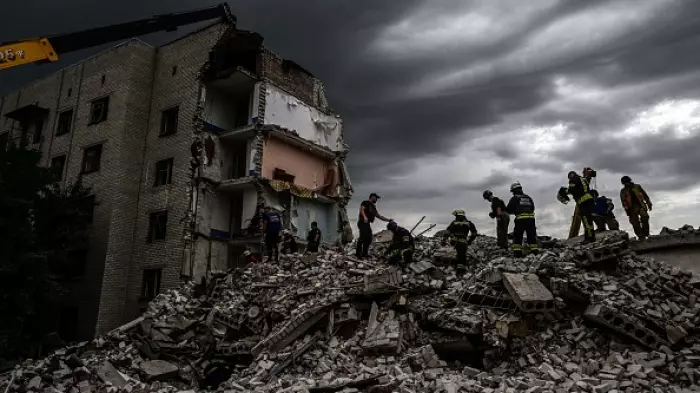Since February, new Health Minister Ayesha Verrall has been affirming that work was under way to prepare for the horrendous pressures on public hospitals expected this winter.
There are still media reports of the effects of severe workforce shortages. We've seen cancelled operations, delayed diagnoses and overcrowded emergency departments.
Heaven for hotels is hell for hospitals
The most comprehensive report was the revelation that in 2022, hospitals had 100% occupancy more than 600 times.
In other words, on average each day roughly two public hospitals around the country were running at an occupancy higher than they were resourced for.
A 100% occupancy rate is heaven for hotels. But it is hell for public hospitals providing emergency, acute and planned (elective) services. Patients who need to be admitted to hospital beds can’t be. This is called bed-blocking, although, in reality, it is more due to staff shortages than bed supply.
Since then, the health system has been waiting for Health New Zealand (Te Whatu Ora) to develop a plan from the health minister to support patients during the expected increased pressures over winter.
The ‘plan’
Eventually Verrall announced the plan on May 4. But, unfortunately, it fell well short of what I would call a plan. Not even a diagram, let alone specific actions and timeframes.
Instead it was a cobbling together and expanding of 24 quality improvement initiatives, 23 of which were already under way.
Roughly assembling or producing something from available parts or elements and rolling them out more can be good. But it is not a winter plan.
The initiatives
The 24 initiatives are wide-ranging but broadly related to redirect “unnecessary” demand on hospitals to care in the community.
- Expanding telehealth services in primary care and ambulances.
- Pharmacies treating minor ailments and providing free consultations.
- Remote patient monitoring;
- Increasing at-home or near-to-home assessment of needs to reduce time in hospital.
- Options for acute care treatment in homes.
- Improving needs assessments in wards.
- Increased community allied health and rapid response services.
- In-home consultations and visits combined with virtual monitoring.
Aspirational
Others, which are incorporated under the redirecting label, are more affirmations of intent, generalisations or aspirational:
- More accessible after-hours and medical care.
- Comprehensive primary care teams. For example, allowing teams of GPs, physiotherapists and pharmacists to carry out multiple consultations with a patient in a single visit).
- Boosting on-site and virtual medical and nursing support for aged residential care providers.
- Rapid national data automation.
- Mental health support to emergency departments.
- Maintaining planned care capacity.
- International workforce recruitment.
- Monitoring covid-19 spread.
Some are to a large or reasonable degree already in place. As well as a number listed above, these include GP access to community radiology services, bivalent covid-19 boosters, influenza vaccinations, promoting childhood immunisations, and expanding on-the-job training for healthcare assistants.
Health minister errs
Unfortunately, when announcing Health NZ’s ‘plan’, Verrall claimed this was only now able to be done under her government’s new ‘reformed’ health system, which started in July last year. I believe she is wrong and should know better.
Most of these initiatives had already been under way well before the ‘health reforms’ and were being trialled or developed in several of the now-abolished district health boards (DHBs).
Before the 'health reforms’, NZ already had a reasonably centralised health system. All that was needed was for the health minister or ministry to require DHBs to put them into place.
The difference between then and now is that before there would have been more engagement with local experience and expertise over how best to do it.
Now, because of the destabilisation and distraction of restructuring and the loss of expertise that followed it, there is much less engagement, if any.
Commendable, but!
The 24 initiatives in the ‘plan’ are commendable. But they are quality improvement initiatives.
Rather than being specifically designed to reduce workforce pressures or cope with severe shortages, they are attempts to improve the quality and accessibility of health services. Many are long-standing innovations.
The nature of these innovations is that many are ongoing works in progress – which is a good thing.
This doesn't mean that they can’t have spinoff benefits for reducing workloads in hospitals, particularly where they involve improving accessibility to healthcare in the community.
However, they will not make a discernible difference for helping hospitals cope with the pressures of the coming winter.
Further, they are not quick fixes. They take time to work. They're not like a garden hose where you can increase the water flow and adjust its spread.
Workforce shortages get a second bite
The severe hospital workforce shortages are one of three major contributors to the crisis, the other two being rising acute health demand and poor leadership of the health system at a national level and by successive governments.
These shortages also make it difficult for these initiatives to make even a small difference to reducing the pressures.
Like the rest of the provision of healthcare, they're highly labour intensive.
The initiatives depend on there being enough workforce capacity and capabilities at a time when we're facing a severe and worsening workforce crisis.
In other words, the initiatives need a yet-to-be-made, or even planned, workforce investment.
It is as if the shortages get a ‘second bite of the cherry’.
The pressure on our hospitals is already intense. And this is before the arrival of winter flu, let along another omicron surge.
I predict that overcrowded emergency departments, bed-blocking, 100% hospital occupancy and a stressed workforce are going to get even worse in the months to come.














